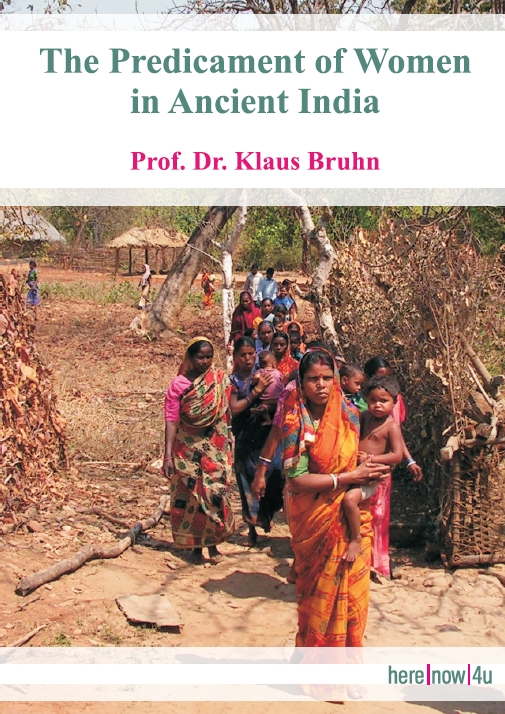Below we outline what may be called a quasi-classification, an attempt to produce order in an apparent chaos. The reader should not get the impression that all the goddesses are unexplained and that one ought to know "much more" about the meaning of the figures than is normally the case (e.g before entering a museum). Some goddesses are puzzling, but not all, and we think that the "quasi-classification" is on the whole a simple road to clearness. Our classification or arrangement is based on literature, but it is not identical with any form of literature. It is often difficult to bring art and literature together.
Some goddesses like Sarasvati (mainly goddess of learning and music), Lakshmi (mainly goddess of fortune), Tripurasundari (cf. Lakshmi), Uma (Shiva's consort), the two river-goddesses (Ganga and Yamuna) and the goddess with child are benign, others like the goddess Camunda-on-the-corpse are generally fierce or terrifying. The goddesses have different aspects: benign, terrifying (standard terms, e.g. PADOUX 279b), heroic, neutral. See also CHEN Ru 24-25. Indian gods and goddesses are not timeless. The heroic Durga-killing-the-buffalo becomes a monster in a late myth (§ 13.3). Almost all goddesses (sculptures) are “lifeless” in the later standard iconography.
Chamunda-on-the-corpse, Kali, Durga killing the buffalo demon, Uma combined with Shiva (the couple with or without their two sons Skanda and Ganesha, a homely motif), the seven or eight divine Mothers and the sixty-four Yoginis (with different animal heads often bordering on the grotesque), the resting queen with or without child (no identity), a single "mother" (compare the divine mothers), all these are in the field of iconography corpuses, units in their own right. Gods and goddesses may change their character and their identity in the course of time: Chamunda -- standing on a male body (whoever that may be) -- is eventually transformed into "Kali", the goddess standing on the body of Shiva; there is thus a Chamunda-Kali corpus (MUKHERJEE). Shiva/Uma are the only married couple in the pantheon.
Corpuses (Kali etc.) are small quasi-systems and help to study an iconographic area (e.g. goddesses in Hinduism) -- 'area' as a set of such micro-corpuses.
Different from the above is the situation in painting (Miniatures, Bazaar prints). The late form of Kali (Kali lolling out her tongue) is prominent, the motifs of the Krishna baby, of Krishna and the milkmaids, of Krishna and Radha are omnipresent. Krishna and Radha are a great subject in religious literature. Mandalas (goddesses "in circulo") do not occur.
Groups of goddesses are rare: the matrikas (7 or 8) and the yoginis ("64"). The numerous lists in Tantric texts (10 Mahavidyas etc.: infra) are hardly reflected in art.
Loosely connected with Hindu iconography (or not connected with it at all) are the following goddesses:
In the first place we mention females in terracotta and stone in early Indian art (generally not identified). Different is the case of "village goddesses". Maryamman or Shitala (goddess of small-pox), Manasa (snake goddess) and Muvalankuli-Camundi (terrific goddess) are examples of important goddesses who do not belong to Hinduism in its narrowest sense. Village-goddesses are either "hot" (passion) or "cool" (detachment). Village deities are almost always hot and female. FLOOD 193-196, pl.19.
The gods and goddesses do not watch over the execution of the female dharma (LESLIE), but narrative literature says what a woman is expected to do (Sita). Puja (image worship) is dominated by local and regional factors. Only goddesses bestowing offspring and curing diseases have well-defined functions.
It is difficult to establish general rational categories for the universe of art.
A dichotomic classification of the goddesses has been attempted by O' FLAHERTY, who is quoted by FLOOD: "WENDY O'FLAHERTY has referred to two distinct categories of Indian goddesses... “goddesses of tooth” who are "erotic, ferocious and dangerous", and “goddesses of the breast”... who are "auspicious, bountiful and fertile" (O'FLAHERTY Be 90; FLOOD 174). Compare also O'FLAHERTY Be 91 et passim ("high-ranking goddesses" and "low-ranking goddesses," "cow and mare").
In Eastern India we see numerous many-armed goddesses with weapons, but also goddesses with child. BAUTZE-PICRON 5 distinguishes the "déesse armée" from the "déesse protectrice de la fertilitée." -- The eastern goddesses were introduced into Jaina iconography (mainly as subsidiary deities), although Jainism is a religion of non-violence and asceticism.
The said opposition can furthermore be conceived as existing in one and the same great being. The Great Goddess (FLOOD) is a central figure: "The Goddess is a contradictory and ambivalent figure in Hinduism. On the one hand she is the source of life, the benevolent mother who is giving and overflowing, yet on the other she is a terrible malevolent force who demands offerings of blood, meat and alcohol to placate her wrath." (174). But this is a general interpretation rather than the description of a single deity.
We conclude by quoting WEINBERGER who calls Durga "a goddess diffracted into an infinite number of divine beings, whose names vary according to time, place, caste, and sectarian affiliation." (14).
 Prof. Dr. Klaus Bruhn
Prof. Dr. Klaus Bruhn
 Title Photo Background:
Title Photo Background: